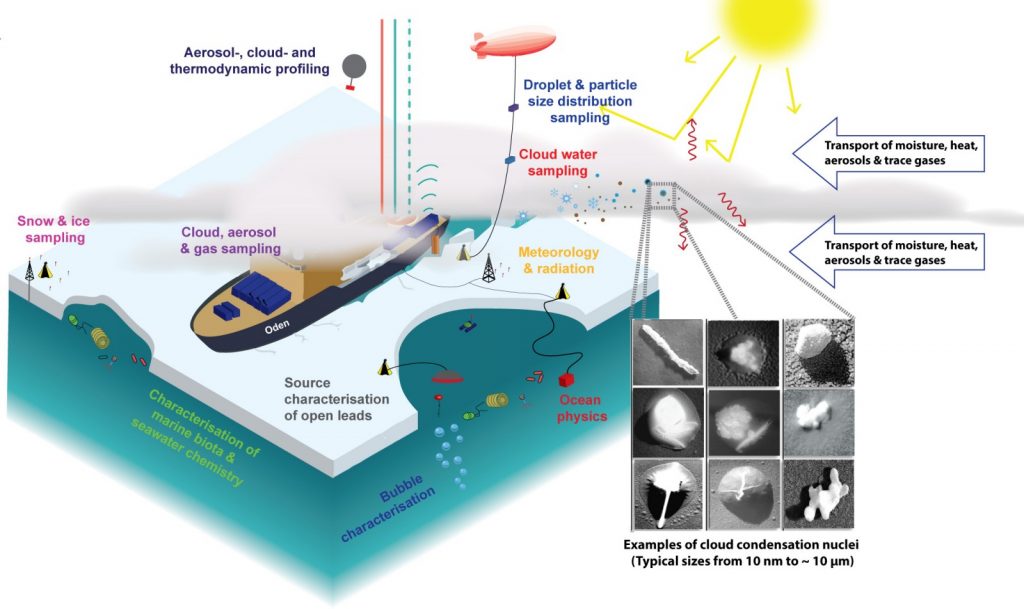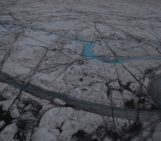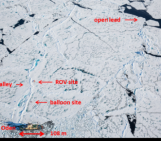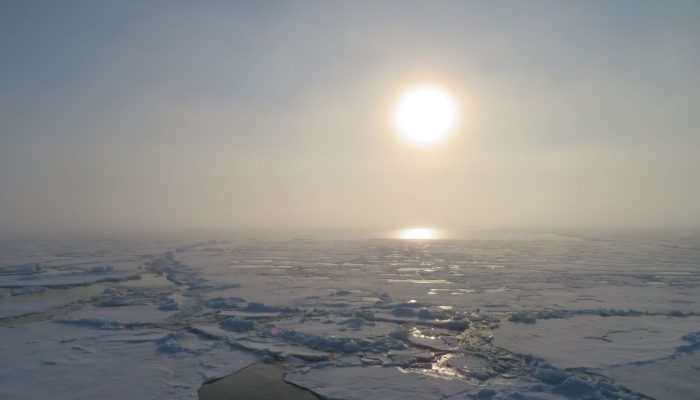
This post is the first of a “live-series of blog post” that will be written by Julia Schmale while she is participating in the Arctic Ocean 2018 expedition.
Low level Arctic clouds are still a mystery to the atmospheric science community. To understand their role the present and future Arctic climate, the Arctic Ocean 2018 Expedition is currently under way with an international group of scientists to study the ocean, lower atmosphere, clouds and aerosols.
Low level clouds in the high Arctic influence the energy budget of the region and they hence play an important role for the Arctic climate. The Arctic is warming about twice as fast as the global average, a phenomenon called Arctic amplification. The role of clouds for climate is linked to their interaction with solar radiation. They reflect short-wave radiation, thereby sending energy back to space and cooling the surface. In the case of longwave radiation, clouds reflect it back to the surface which causes a greenhouse effect that is warming the surface. The top of the clouds cools during this process, which makes air parcels surrounding the top cool as well and sink to the surface. These air masses are replaced by warmer surface air which rises. This can cause a well-mixed Arctic boundary layer. Most of the time, however, the cloud level is decoupled from the surface due to temperature inversions. This is possible when clouds are thin. In this case, clouds cannot feed on the water vapor from the surface and they might dissipate. Interaction of clouds with short-wave radiation in the summer is most of the time less important than their interaction with long-wave radiation. This is because the cloud albedo is similar to the sea ice albedo. Hence clouds do not have a strong cooling effect. However, as summer sea ice retreats and the surface gets darker, clouds may contribute to surface cooling in the future.
The overall radiative properties of clouds are further influenced by the phase of the clouds. Arctic summer clouds are normally mixed-phased, that is liquid droplets co-exist with ice crystals. Usually, ice and liquid water do not co-exist, because the ice crystals grow at the expense of liquid droplets that evaporate (because the saturation water vapor pressure is higher of liquid droplets than ice crystals). However, in simple words, in the summertime Arctic, when mixing of air masses occurs, liquid droplets form in rising air parcels that sustain the liquid layer at the bottom of the cloud which in turn feeds the ice crystal growth.
As cloud droplets and ice crystals only form on cloud condensation nuclei (CCN) and ice nucleating particles (INP), the whole complexity described above, depends on the presence of aerosol particles. But the central Arctic Ocean has an extremely limited supply of CCN and INP. Potential sources include locally produced or long-range transported particles. Long-range transport of particles – or precursor gases that form particles – to the high Arctic in the free troposphere can contribute to the number of CCN and INP. However, in the summer Arctic atmosphere precipitation is frequent and particles can be washed out along their way north. Regional transport of trace gases such as dimethyl sulfide (DMS), which is emitted from phytoplankton blooms in the marginal ice zone, can contribute to the CCN after atmospheric oxidation. Local sources in the high Arctic are however, extremely limited. Open leads, those are areas of open water which form as the sea ice is moving, can produce particles through bubble bursting. These bursting bubbles expel material such as sea salt and organic particles contained in the surface water into the air from where they might be transported to the cloud level. Another conceivable source of particles is new particle formation. This means that particles are freshly formed purely from gases. This process and the chemical nature and sources of the gases are however poorly understood.
To shed light on how cloud formation works in the summer time high Arctic and how this might change in the future with changing climatic conditions the Arctic Ocean 2018 Expedition is designed to investigate physical, chemical and biological processes from the water column to the free troposphere. The graphic below provides a schematic of the planned activities.
On 1 August, we left Longyearbyen. After a 24 hour station in the marginal ice zone, we are now heading towards the North Pole area where we look for a stable multi-year ice floe against which the ship will be moored for several weeks to drift along. This strategy will give us the opportunity for detailed process studies. In the upcoming blog contributions, several of these process studies will be featured.
Further links:
Expedition website:
https://polarforskningsportalen.se/en/arctic/expeditions/arctic-ocean-2018
Arctic ocean blog of the Paul Scherrer Institute:
https://www.psi.ch/lac/arctic-ocean-blog
Stockholm University Expedition Webpage:
https://www.aces.su.se/research/projects/microbiology-ocean-cloud-coupling-in-the-high-arctic-moccha/
Edited by Dasaraden Mauree
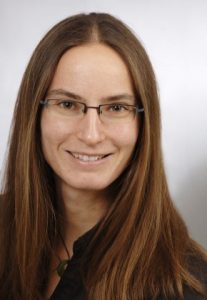 Julia Schmale is an atmospheric scientist at the Paul Scherrer Institute in Switzerland. Her research focuses on aerosol-cloud interactions in extreme environments. She is a member of the Atmosphere Working Group of the International Arctic Science Committee and a member of the Arctic Monitoring and Assessment Programme Expert Group on Short-lived Climate Forcers .
Julia Schmale is an atmospheric scientist at the Paul Scherrer Institute in Switzerland. Her research focuses on aerosol-cloud interactions in extreme environments. She is a member of the Atmosphere Working Group of the International Arctic Science Committee and a member of the Arctic Monitoring and Assessment Programme Expert Group on Short-lived Climate Forcers .

